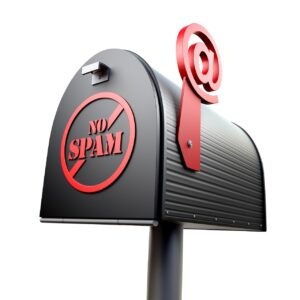In order to streamline your email marketing, you have to acquire a validated email list of prospects.
You have your milestones to achieve so you’ve carefully crafted excellent content, planned everything out strategically, but things didn’t pan out too well because a chunk of your emails bounced (typically 5-10%).
The main question is then – why emails bounce?
Emails bounce due to different reasons – don’t think too hard about this subject, and you definitely needn’t blame yourself for the causes that revolve around bounced emails.
Truth is that sometimes it is impossible to avoid bounce rates.
Since CloudLead’s data analysts deal with “top of the funnel data” in the lead generation process, we have come up with a list of reasons why your emails bounce.
After reading this article, you will know what a bounced email actually is, the major reasons why emails bounce and the difference between hard bounce vs. soft bounce emails.
Bounced Emails
A more B2B relevant definition of a bounced email is as below:
“A bounced email is a message that was undeliverable to a particular recipient of an email marketing campaign or cold email campaign. Typically a sent email either soft bounces or hard bounces. Therefore bounced emails are not only due to invalid addresses but technical issues like recipient ISP & firewall settings, SPAM filters, email update lag can account for bounced emails.”
This is one of the main reasons why emails bounce.
From this definition, we can understand that invalid emails is not a synonym for bounced emails.
The point is that invalid emails is a huge problem in the big data industry we see emerging, but software companies like CloudLead are continually investing resources in reducing, if not eradicating, invalid email addresses.
Now that you know what a bounced email is, there are definitely a few points in the definition that need elaboration.
The second point will just give you the relevant insight needed for understanding the two major kinds of bounced emails.
Soft Bounced Emails
A soft bounced email is temporary and is difficult to determine how long it will remain undeliverable. A complete list of how an email soft bounces are as follows:
-
-
- Mailbox inbox limit full
- Recipient’s mailbox cannot receive that size of message
- Recipients server is down or offline
- Misconfigured settings on the recipient’s side
- Transient bounce (1st attempt bounce)
- External software downloaded for filtering emails
- Temporary IP address block or blacklisting
- Temporarily blocked Email marketing or CRM software
-
Notes For Consideration
Certain corporate IT departments implement restrictions on the size of a message that you can send.
Also, misconfigured settings like setting limits in the personal settings of email platforms can cause similar problems as well.
A transient bounce means that your server was unable to send the email initially due to other reasons.
You can refer to your email marketing software to understand if the software you are using is not blacklisted or not, if they don’t know then maybe the recipient’s company will definitely have the answer.
Sometimes the IT department is running security runs which could affect your email result. Again, this is one of the primary reasons why emails bounce.
What You Can Do
-
-
- Make sure you are adding the unsubscribe link in your email
- Outsource email data cleaning – Enrich contact data
- Send through a separate IP address
-
Hard Bounced Emails
A hard bounced email is permanent and can hence, be more serious than soft bounce. Reasons for getting hard bounced emails are as follows:
-
-
- Email marketing software is permanently blacklisted
- SPAM score is too high
- Invalid email address
-
Notes For Consideration
Emails are removed from the map due to data decay; it’s important to note that MarketingSherpa reports that only within a year 22.5% of data is no longer valid.
SPAM score is calculated and derived from the frequency of emails and the kind of content being sent. Invalid emails are basically those emails that have errors in the email address, maybe the name was incorrectly added from the source it was pulled.
What You Can Do
-
-
- Validate your contact list
- Write personalized emails with fewer sales texts
- Get your old email data cleaned
-
Now that the differentiators have been established, it would be worthwhile to mention that seeing such problems in the market, CloudLead took a major step by providing free replacements on hard bounced emails to its clients. So, if you are buying B2B sales contact data from CloudLead, you needn’t worry about losing emails.
And if you note a similarity of bounce rates from a particular company, then you can refer to the factors mentioned above to give you clarity the next time your email list is bouncing back.
The Cloudlead team hopes that this article was helpful for you.
If you have any more queries regarding bounced emails, feel free to contact us at hello@cloudlead.co












